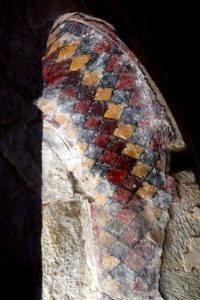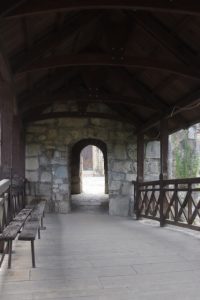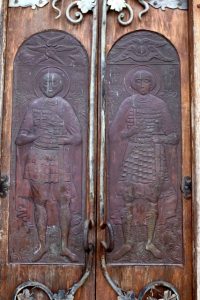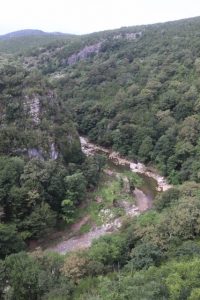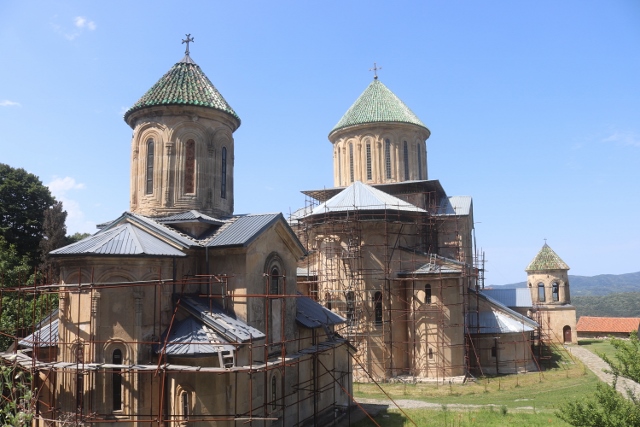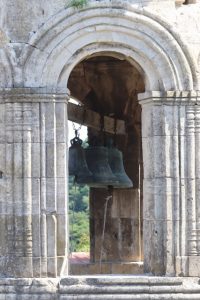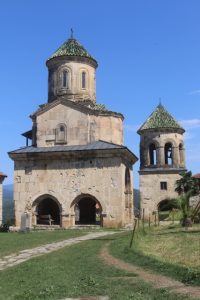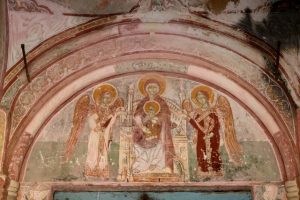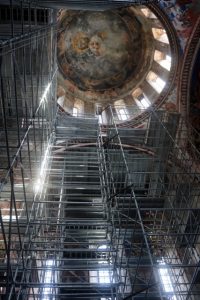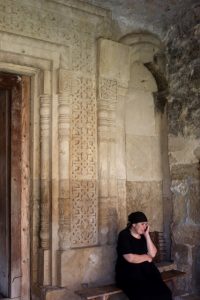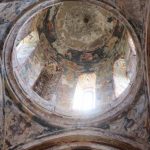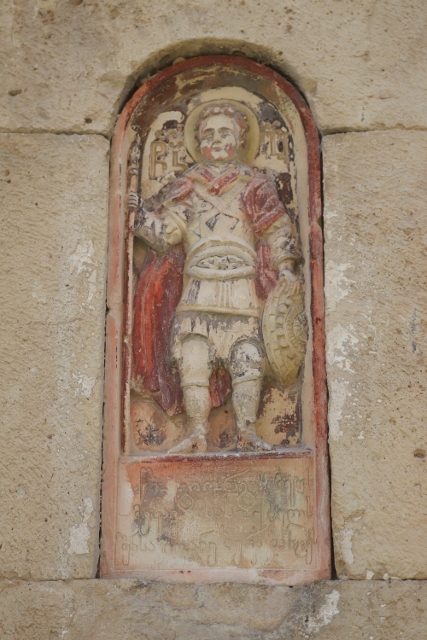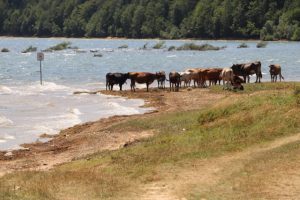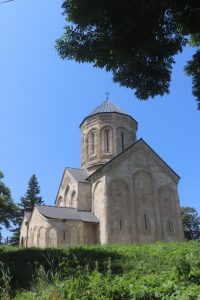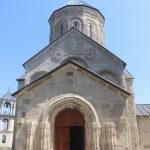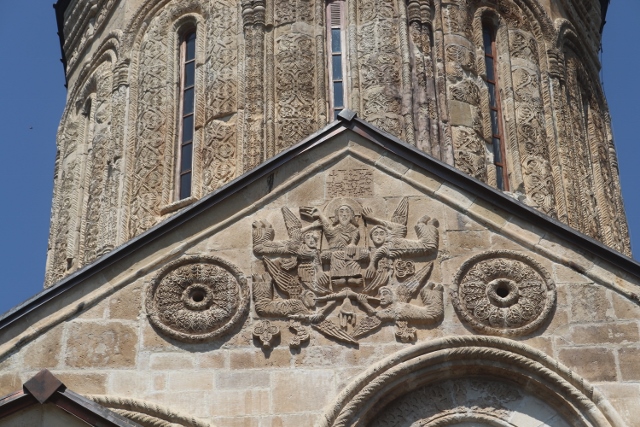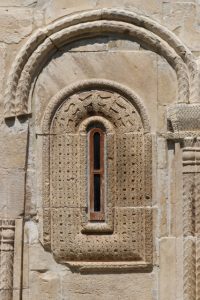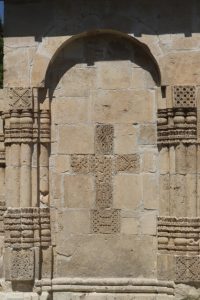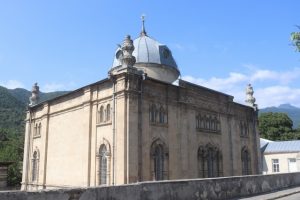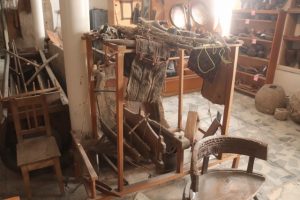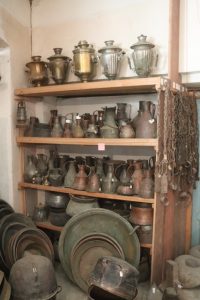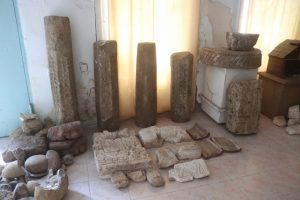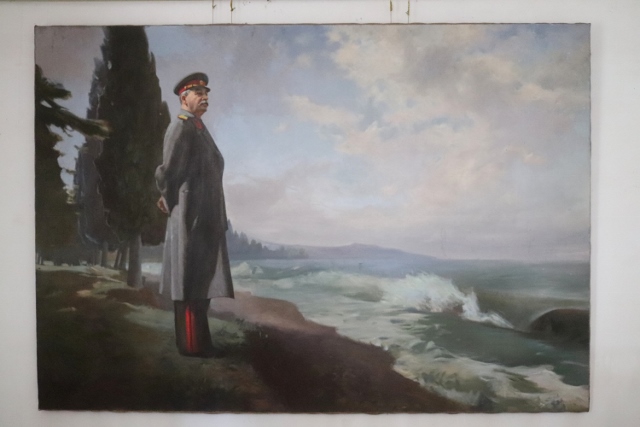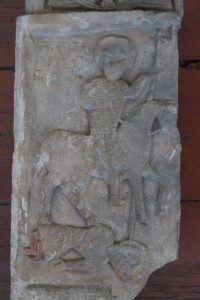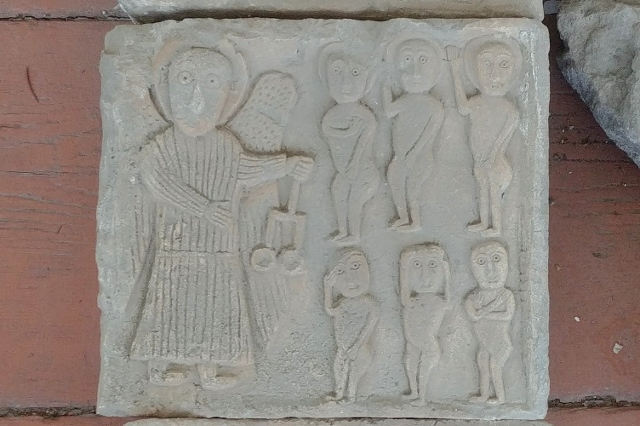On the way to Svaneti, one of the high mountain areas in Georgia, we visit some of the country’s most famous churches and monasteries, as well as the lovely, uncomplicated Oni museum.
One of Georgia’s unruliest ethnic groups are the Svans, inhabitants of the region Svaneti, high up in the Caucasus. They have a not so distant history of robbing non-Svans, especially tourists, along the access road, which at the time would have been a poor dirt track up into the mountains. Nowadays, there is a good tarmac road to Mestia, the main settlement in Upper Svaneti. And there is also a rough track, from the town of Lentheki, and not necessarily accessible the whole year around, that crosses the Zagari Pass, at some 2620 m, before descending into Mestia by way of Ushguli – more about Ushguli later.
So guess which road we had chosen into Svaneti. We had secured the services of a sturdy 4×4 from a reputable Japanese make, a monster really, but he, our last trip into Georgia’s mountains, three years ago to Tusheti and back, was done with a clearly less than optimal vehicle, and we have learned since.
We have allowed two days to reach Mestia; after all, the idea is not to make kilometers, but to have time to see a couple things on the way, too. And that starts already 10 minutes outside Kutaisi, with the Motsameta Monastery, founded in the 8th C. In fact, most of the monastery is closed to the public, only the 11th C church can be visited – which is a relatively sterile affair, thanks to the Bolshevists destroying the ancient frescos. But much is made up by the spectacular location of the complex, on a steep cliff above the river.
Not far along is the second stop, at the Gelati Monastery, an early 12th C construction commissioned by Davit Agmashenebelis – the Builder, indeed -, and generally considered one of the most beautiful in Georgia. Davit had himself buried at the gateway to the complex, so that everybody would walk over him, and remember him. The main church, the Cathedral of the Virgin, has been destroyed several times, up into the 16th C, thus most of the frescos inside date from 16-17th Century, after restoration. Unfortunately, the cathedral is being restored again, both outside and inside, for which extensive scaffolding has been raised. Which means that most of the interior decoration is thus invisible. But from what one can see, in the main apse and in several small chapels in the side of the cathedral, this is a gem, indeed. There are several other buildings on site, a bell tower, a music hall – where good willing musicians are trying to interest the assembled tourists in a small concert of a Capella singing -, and a couple of smaller churches, of varying interest. One of those, the church of Saint George, supports another collection of bright frescos. More exaples of decorations are here for the Church of the Virgin, and the Church of Saint George
.
The most impressive church along the route we have chosen is the Church of Saint Nicholas in Nikortsminda, an bit more than an hour up the valley of the Tskaltsitela River. Another 11th C construction, this one is carved on the outside. Inside, the church is adorned with extensive 16-17th C frescos depicting the life of Christ. And on one of the sides is my favourite subject, Judgement Day. More frescoes from the Church of Saint Nicholas in Nikortsminda in a separate entry
.
We find a room for the night in Ambrolauri, in the impressively sounding AMBROsador Hotel, which turns out to be a lot less impressive looking three-bedroom guesthouse – but which very nice people, a lovely small balcony and a garden, so we decide to stay.
In the afternoon we drive to Oni, a short side excursion. The apparently beautiful road, up the Rioni river valley through mountain scenery, is somewhat disappointing. The area is actually quite populated; simple, mostly ugly brick houses with corrugated iron roofs dotting the countryside. But Oni itself makes up for this, a lovely town with lots of tree-shaded streets, a synagogue – which is closed, of course – and the unbeatable Oni Museum, which has everything from modern paintings of local artists to an ethnographic room packed with pots and pans and all matter of utensils, and 10-11th century church windows, haphazardly spread around. It is as if we have come home again! Well, except that we wouldn’t so prominently display a painting of Stalin, of course.
next: we continue to Svaneti.
